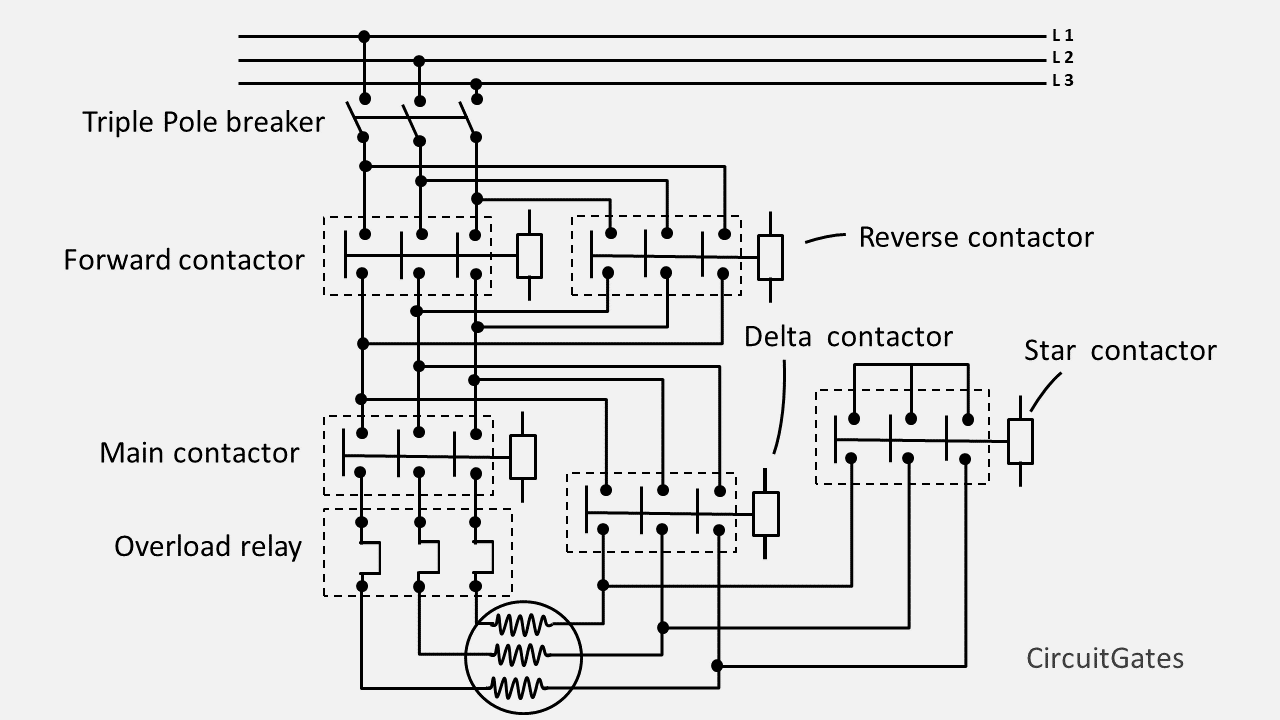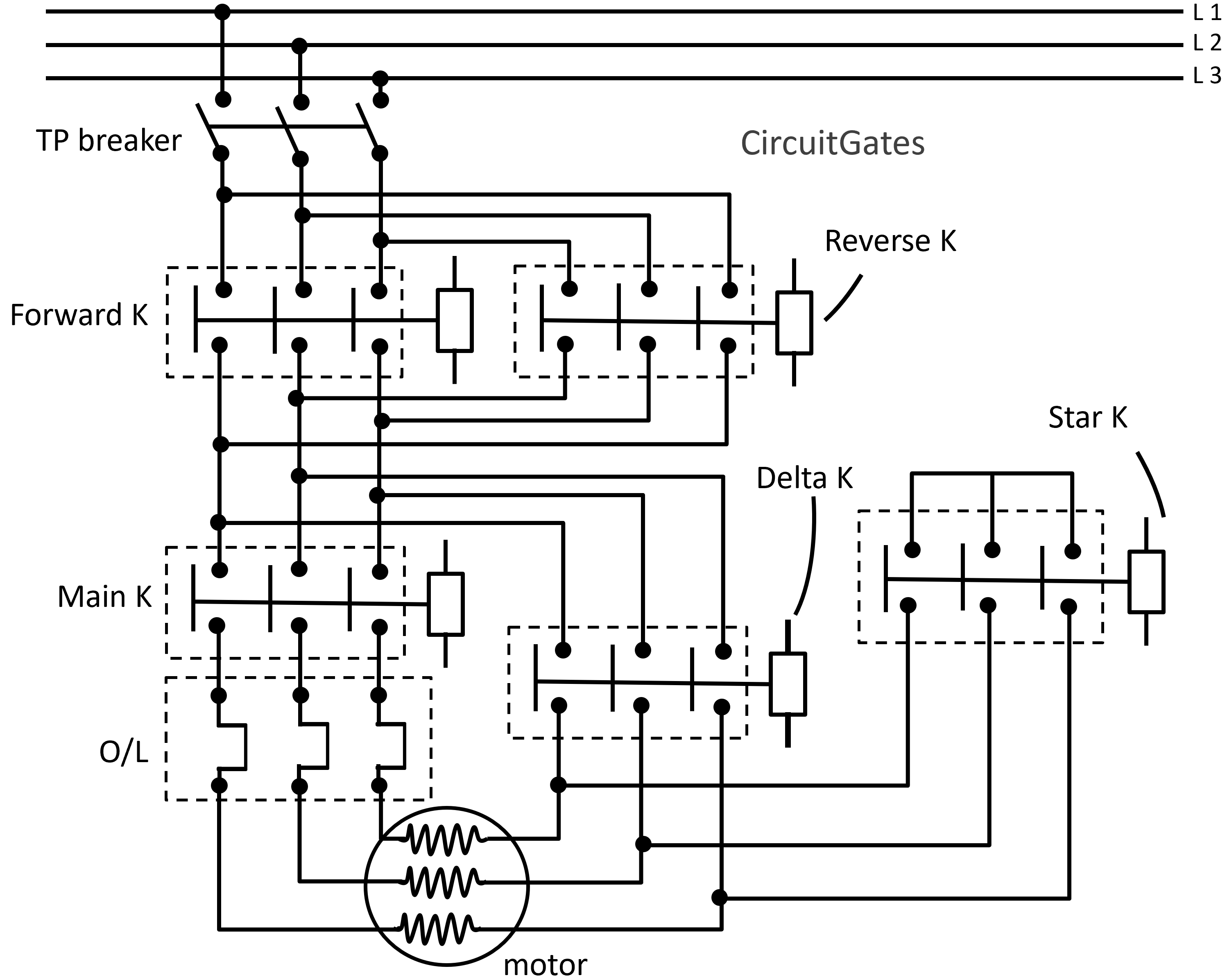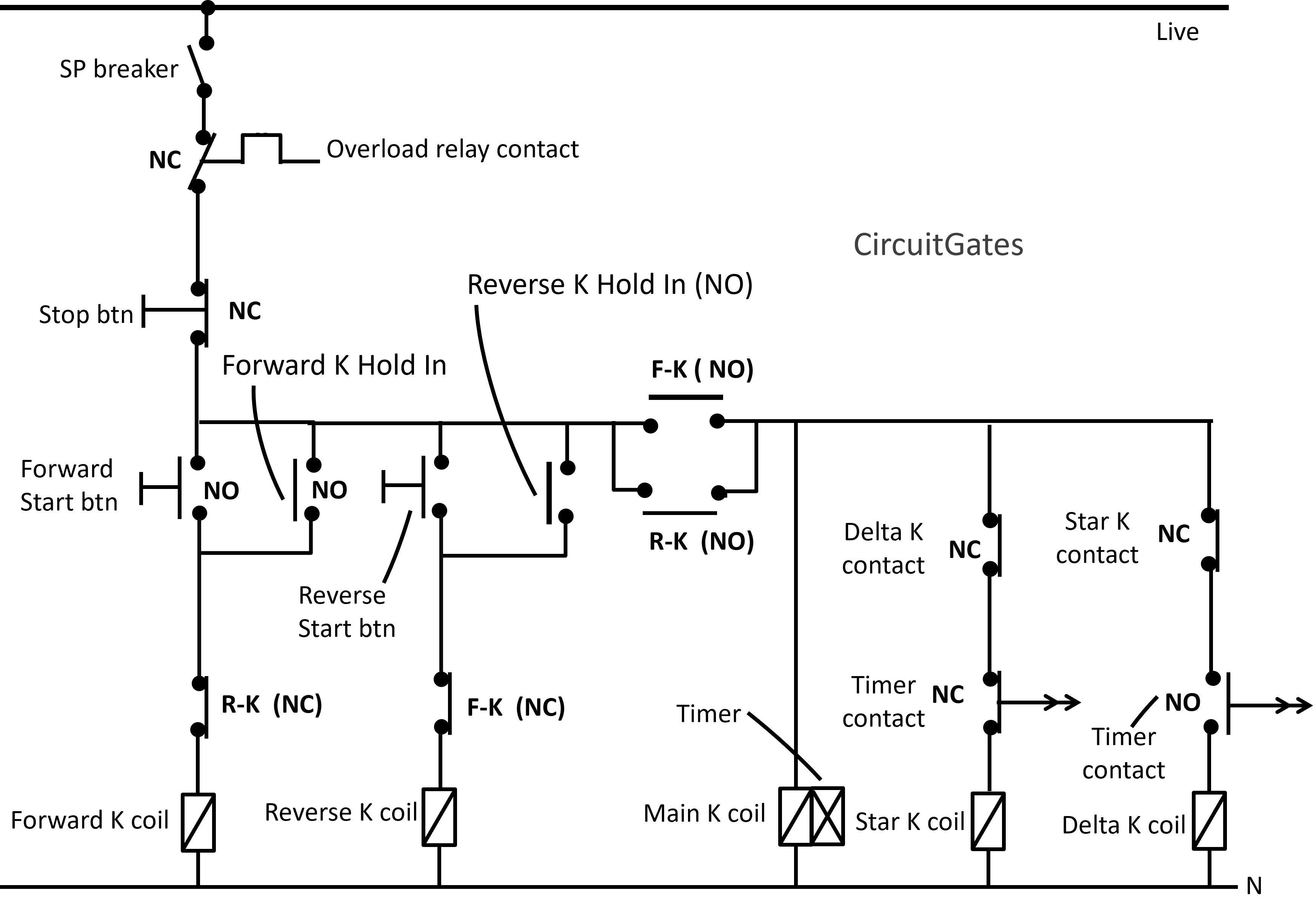How does a Star-delta Forward and Reverse starter work?

A Star-delta forward and reverse starter is a starter widely used in industrial sites. As an electrician it is important to understand how the starter work.
The starter has two circuits that are the power and control circuits.
The starter enables the electric motor to run either in the forward direction or in reverse direction.
The star-delta forward and reverse starter is found on industrial machines that are supposed to change direction of operation regularly.
A good example of an application of a star-delta forward and reverse starter is a conveyor belt that is used to move objects from one place to the other.
The forward and reverse starter anables the conveyor belt to change the direction of rotation without reconnecting the phases to the electric motor.
The diagrams below show a forward and reverse star-delta starter power and control circuits.
Power Circuit.

Control Circuit.

- TP Breaker - Tripple pole breaker
- SP Breaker - Single pole breaker
- K - Contactor
- btn - Button
- NC - Normally closed
- N - Neutral
- O/L - Overload relay
- NO - Normally open
- F-K - Forward contactor
- R-K - Reverse contactor
Key
Components of a star-delta forward and reverse starter
As in the previous diagrams, the starter consists of:
1.Start buttons (forward and reverse)- a start button is a normally open contact button that is pressed for the electric motor to run.
2.Stop button - is a normally closed contact button that is pressed to stop the electric motor.
3.Circuit breakers - a circuit breaker is a device that is manually operated to switch off the circuit for maintenance or they automatically trip, breaking the circuit in the event of a fault.
4. Overload relay - overload relay breaks or switches off the circuit in the event of an overload that causes overheating of the electric motor windings.
Overload is a condition in which current flowing in a circuit exceeds the amount required, leading to overheating of the electric motor windings.
Overheating of electric motor windings results in burning of the electric motor. Some overloads may not cause tripping of circuit breakers, so an overload relay is needed.
5.Contactors (Forward, reverse, main, delta and star) - A contactor is a device that when current flows through its coil, closes the contacts of the power circuit for electric motor to run and vice versa.
6.Timer - is a device that anables the electric motor to switch from star to delta.
7.Electric motor - is a device that converts electrical energy into mechanical energy.
How does a star-delta forward and reverse starter work?
On a star-delta forward and reverse starter, to start the electric motor in forward, the forward start button is pressed. When the forward start button is pressed, current flows through the forward contactor coil.
As current flows through the forward contactor coil, the coil becames energized.
The energized coil causes the power contacts and other normally open contacts of the forward contactor to close including the normal open contact labeled "F-K(NO)" and normally closed contacts of the forward contactor to open.
The contact labeled "F-K(NO)" allows current to reach the star-delta part of the control circuit.
As current flows through the main contactor and star contactor coils, it causes their power contacts and normally open contacts to close and normally closed contacts to open.
This result in power reaching the electric motor in star and the electric motor begins to run in forward direction.
After a preset time on the timer has reached, the timer opens the control circuit contact connecting the star contactor coil and closes the control circuit contact connecting the delta contactor coil.
This stops current from flowing through the star contactor coil while allowing current to flow through the delta contactor coil.
When current stops from flowing through the star contactor coil and starts to flow through the delta contactor coil, the star contactor coil is de-energised while energising the delta contactor coil.
This causes the star contactor power and other contacts in close position to open and vise versa to the delta contactor. The electric motor begins to run in delta in the forward direction.
We have already covered how a star-delta starter works, check out for further explanations.
To start the electric motor in reverse, we first need to stop the electric motor using the stop button if it is still running in forward and then press the reverse start button.
When the reverse start button is pressed, what happens is just the same as what we have said in forward direction except that the reverse components such as reverse start button and contactor are now in action.
When the reverse start button is pressed, current flows through the reverse contactor coil.
As current flows through the reverse contactor coil, the coil is energized and causes the power contacts and other normally open contacts of the reverse contactor to close including the normally open contact labeled "R(NO)" and normally closed contacts of reverse contactor to open.
The contact labeled "R-K(NO)" allows current to reach the stardelta part of the control circuit and the electric motor begins to run in reverse direction.
The contacts labeled R-K(NC) and F-K(NC) are for interlock, they prevent the electric motor from accidentally switching between forward and reverse directions.
The "Delta K contact" and "Star K contact" on the control circuit diagram prevent the electric motor from accidentally switching between star and delta.
If you have made it this far, thanks for reading. Please consider subscribing to our YouTube channel for more electrical tutorials.